One reason for the dramatic increase in Lyme disease is that we’ve created ideal habitat for deer; forests like the Blue Hills are crisscrossed with roads and spotted with houses, creating ‘edge habitat’ where deer thrive. Unfortunately, we’ve also removed many of the deer’s predators that keep populations in check. Deer and forests are healthiest and the incidence of Lyme disease is reduced when deer populations are in densities of no more than eight per square mile. The Massachusetts Division of Fisheries and Wildlife Management estimates that the Blue Hills has 30 per square mile; a neighborhood adjacent to the Blue Hills has confirmed 70 per square mile. As deer populations continue to climb, we will have more stories like Elaine’s.
Photo: When deer browsing prevents trees from regenerating, the plants and animals have trouble recovering after environmental stresses like large storms or fires. More deer, mean more ticks which means more Lyme disease. This photo, taken at Chickatawbut Hill after a fire about five years ago, shows how the trees and shrubs are not growing back. According to the U.S. Forest Service naturalist, Tom Rawinski, “when the last big trees topple over [at Chickatawbut], the forest will be no more.”


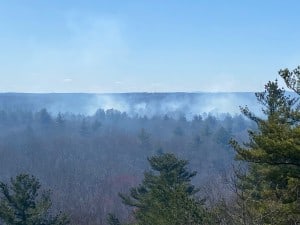





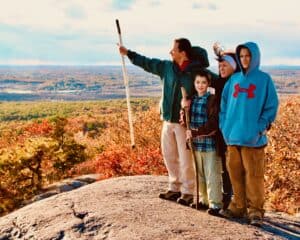

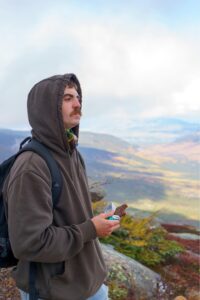


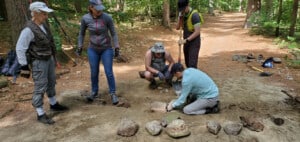

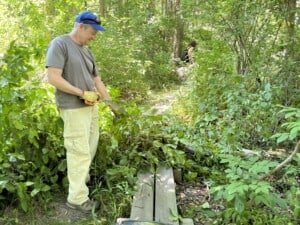

northern copperheads, not eastern- sorry…
at the same time, these kind of areas are necessary for the survival of timber rattlesnakes and eastern copperheads; two endangered species whose populations in the Commonwealth are likely in the hundreds… ironic